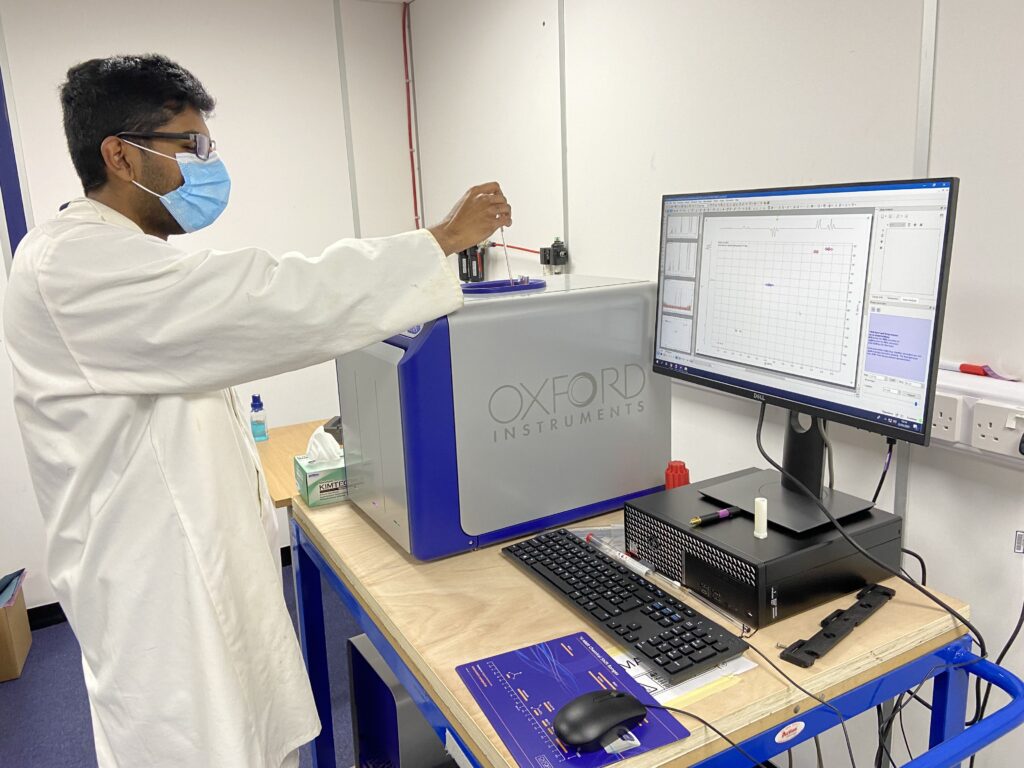An article about BLOC project was recently published on Cordis EU Research Results. It gives an overview of the project, including the technology and proof-of-concept, and talks about its innovative aspects and how the results can impact on biomedicine and reach the society.
BLOC project is creating an innovative technology to monitor diseases and cellular responses to various stimuli, using dynamic nuclear polarisation (DNP-MR) techniques and a benchtop nuclear magnetic resonance (NMR) spectrometer. Researchers are working on a piece of equipment to observe the metabolism of tissues engineered with cells in an easy and non-invasive way, filling the actual gap in metabolic studies that use simple 2D in vitro cell cultures.

Imagine that your doctor could observe the response of your own cells to a specific drug during a routine consultation. The doctor could test if the treatment you apparently need will have the expected effect and know your body’s reaction in advance. By doing so, lots of time (and money) would be saved, but more importantly, it could mean a considerable reduction of secondary effects for you and choosing the right drug for you. It seems science fiction, but it is closer than you might think.
BLOC is a European project that is working towards enabling precisely that. A consortium composed of different European academic and industrial partners is developing new technology to study the metabolism of tissues in real time.
New technology to see the metabolism in real time
To fully utilize biological systems, it is crucial to understand the systems’ complexity from molecular to multi-organ level. Pharmaceutical industry relies heavily on in vivo animal models and in vitro two-dimensional (2D) cell cultures to develop therapeutic strategies. There are many ethical issues surrounding experimentation in animals, and also serious concerns regarding their biological relevance, because the capacity to extrapolate animal model data to human conditions is limited.
Although current in vitro tissues are useful to study molecular and cellular processes, there are some limitations as they do not cover the complexity of the physiological microenvironment in which cells grow. Current 2D tissue models often do not simulate complex cell-cell and cell-matrix interactions, crucial for regulating cell behaviours in vivo. Due to these shortcomings, there is now substantial interest and need in developing fully functional 3D tissues that closely mimic the in vivo system for disease modelling and chemical testing, such as bioengineered organs.
BLOC will develop new technology based on a benchtop nuclear magnetic resonance (NMR) spectrometer and dynamic nuclear polarisation (DNP-MR) for metabolic readout of 3D in vitro models to monitor disease and evaluate responses to different stimulus. The use of a 3D tissue engineering approach renders precise positioning of cells and defines cells’ interactions with their surrounding environment, mimicking the 3D structure of native tissue constructs. The novelty of this technology is the use of a small NMR spectrometer that can fit in any bioengineering laboratory and dissolution DNP, which increases the MR signal of endogenous 13C-labelled metabolites by a factor of more than 10,000 relative to the physiological background. Metabolites hyperpolarised by DNP and injected into cells and tissues enable real-time quantitative assessment of metabolite flux and spatial distribution non-invasively.
Diabetes and liver diseases as proof-of-concept
Diabetes and non-alcoholic fatty liver disease (NAFLD) are significantly increasing worldwide. NAFLD is strongly associated with obesity, insulin resistance and dyslipidaemia. On the other side, type 2 diabetes, the most common form of this disease (90–95% of cases), is preceded by a prediabetic stage characterised by insulin resistance. Despite the high prevalence of both diseases, there are currently no methods to predict their metabolic onset, disease progression and treatment efficacy. A key step to face this problem is to develop a technology able to provide precise diagnostic and metabolic analysis at an economically affordable cost.
As a proof-of-concept, BLOC project will fabricate a biomimetic model composed of liver cells and pancreatic islets and develop the necessary benchtop NMR hardware and software to study such metabolic diseases. The study of the crosstalk between different cell populations in the liver and pancreas would broaden our understanding of complex systems contributing to metabolic diseases. BLOC technology is expected to be available for society in the next few years.
Keywords
health, tissues, NMR, research, technology, cells